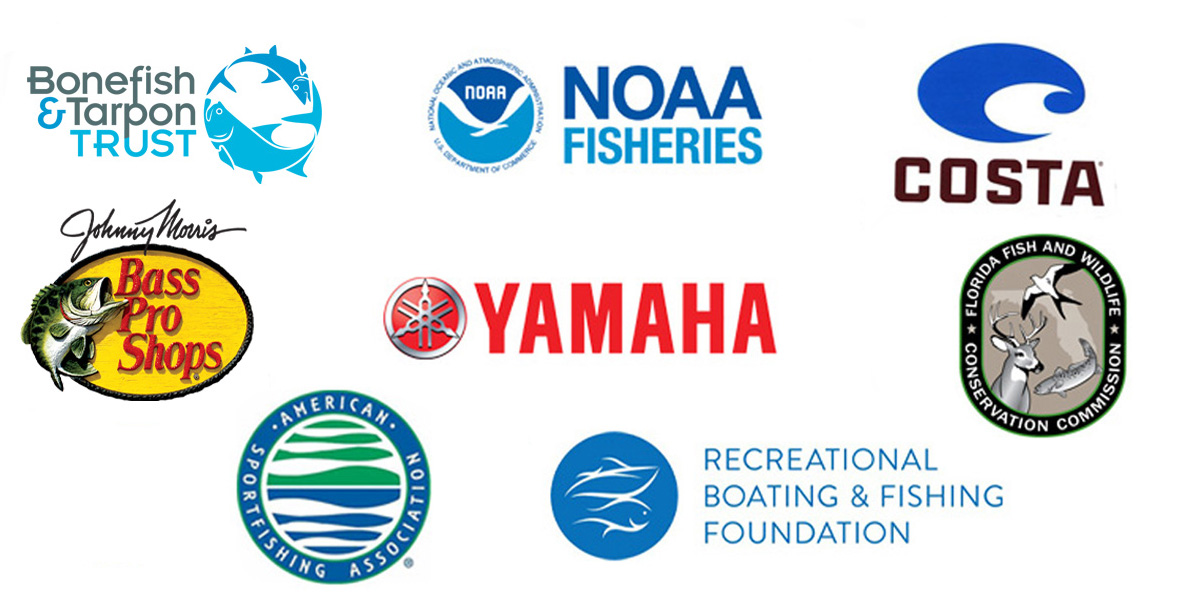As part of the annual sportfishing trade show hosted by the American Sportfishing Association, TRCP moderated science-based panel presentations over two days to educate attendees about top saltwater fisheries conservation issues.
If you’ve ever attended an ICAST trade show in Orlando, you know that there is A LOT going on, with a who’s-who of sportfishing-related businesses and conservation organizations offering an incredible array of booth displays, presentations, exhibits, and events. So TRCP was flattered to have such high attendance at our Conservation Summit last week, where experts covered fisheries management topics that included the incorporation of habitat and water quality improvements into fisheries management, the loss of retired oil rigs-turned-reefs, Florida Everglades restoration efforts, proper use of descending devices for reef fish releases, and Gulf of Mexico fisheries management updates.
We aren’t able to fully sum up all the panel discussions and scientific presentations covered for five topics that spanned two days, but here are some top themes that emerged at this year’s Conservation Summit.
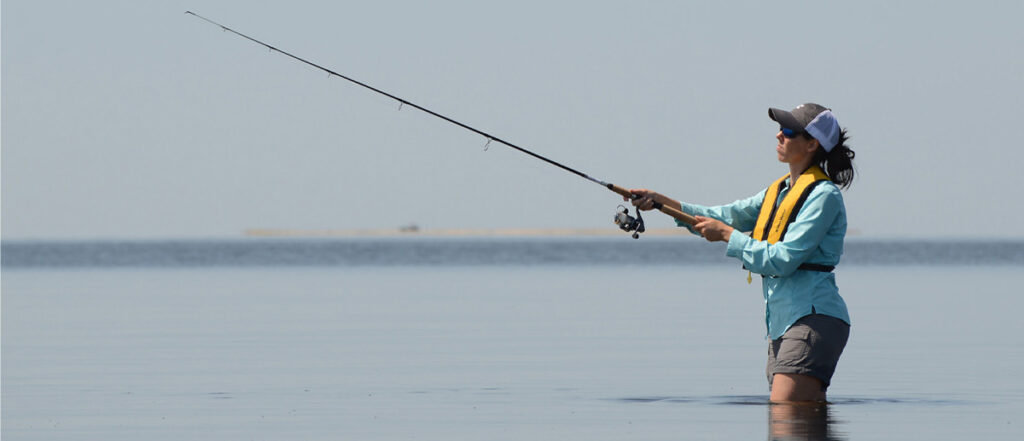
We Face Significant Marine Fisheries Challenges
From the imminent planned removal of hundreds of flourishing artificial reefs in the Gulf of Mexico to the loss of critically important seagrass and mangrove fish habitats, there are many issues to tackle to improve the health of coastal, inshore, and offshore marine habitats.
“We don’t have a lot of time left, so we’re going to be pursuing this pretty hard,” said Chris Horton, fisheries policy director for the Congressional Sportsmen’s Foundation, of the problem of Gulf oil rigs being removed at a breakneck pace. Horton said he hopes a congressional bill will be introduced soon to address the reef removal problem.
Water quality concerns are also a major challenge facing fisheries managers. A good example highlighted at the summit is a threat sometimes generated far from the ocean: municipal wastewater that, even after standard treatment and eventual flow into marine environments, carries a toxic cocktail of pharmaceuticals that are absorbed by saltwater species.
“We found pharmaceuticals in just about every fish we tested,” said Dr. Aaron Adams, director of Science and Conservation for the Bonefish & Tarpon Trust, of research on the presence of these drugs in various fish species. Adams said that these chemicals can change the feeding, migration, and predator avoidance behaviors of valuable sportfish species like redfish and bonefish, impacting survival and reproduction with population-level consequences. One hundred percent of the Florida Keys bonefish sampled in a Florida International University study had pharmaceuticals present in their tissues, with an average of seven pharmaceuticals detected per fish.
The good news is that this sort of pharmaceutical release problem can be addressed by improving wastewater treatment facilities, which Switzerland, Sweden, and other countries have successfully accomplished.
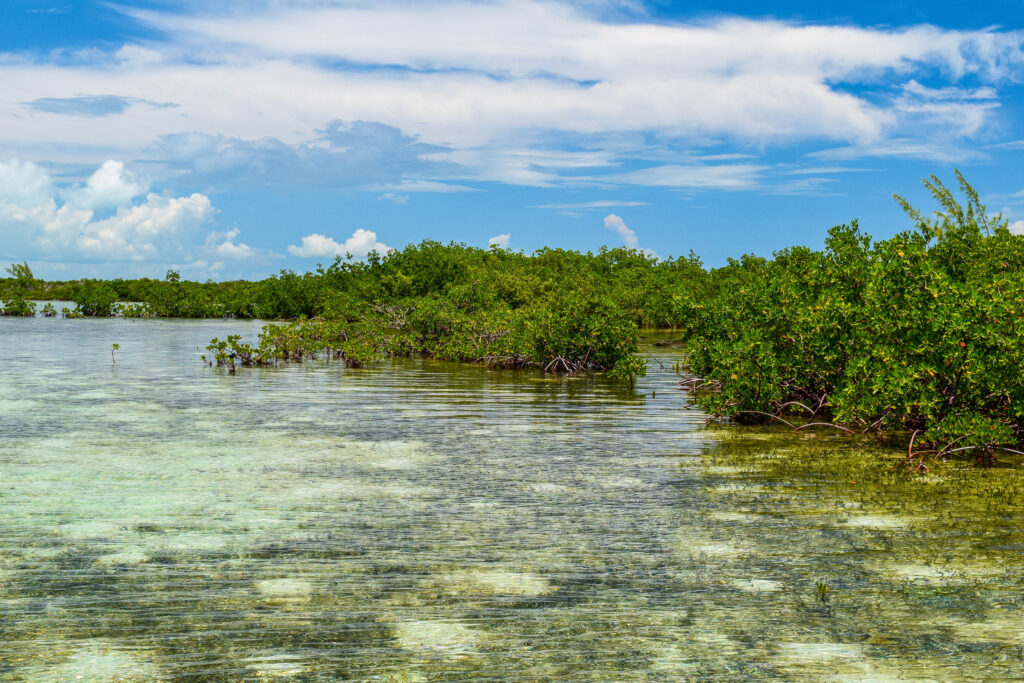
Partnerships Are Critical for Success
Partnerships and coalitions form the foundation of how TRCP gets things done. The necessity for teaming up with other organizations and agencies to accomplish conservation goals was frequently stated at the ICAST Conservation Summit, including in presentations by representatives of the National Oceanic and Atmospheric Administration and Florida Fish and Wildlife Conservation Commission (FWC). Representatives for the agencies spoke about their collective wetland/fish habitat creation and improvement efforts at the Robinson Preserve, a 487-acre salt marsh preserve located on the south end of Tampa Bay.
“The Robinson Preserve is a shining example of how each of these partners can work together to restore disturbed farmland back to healthy wetland habitat that sportfish will thrive in,” said Jessica McCawley, FWC director of the Division of Marine Fisheries Management.
What was previously degraded coastal farmland at the preserve is being converted to wetlands that include oyster reefs, a sportfish nursery, and mangrove islands. NOAA was recognized at the summit as a partner to FWC in the Robinson Preserve efforts, and also by the Florida Department of Environmental Protection for its assistance on other projects.
“We don’t do anything by ourselves,” said Carrie Selberg Robinson, NOAA Fisheries director of the Office of Habitat Conservation. “We get things done by working together.”
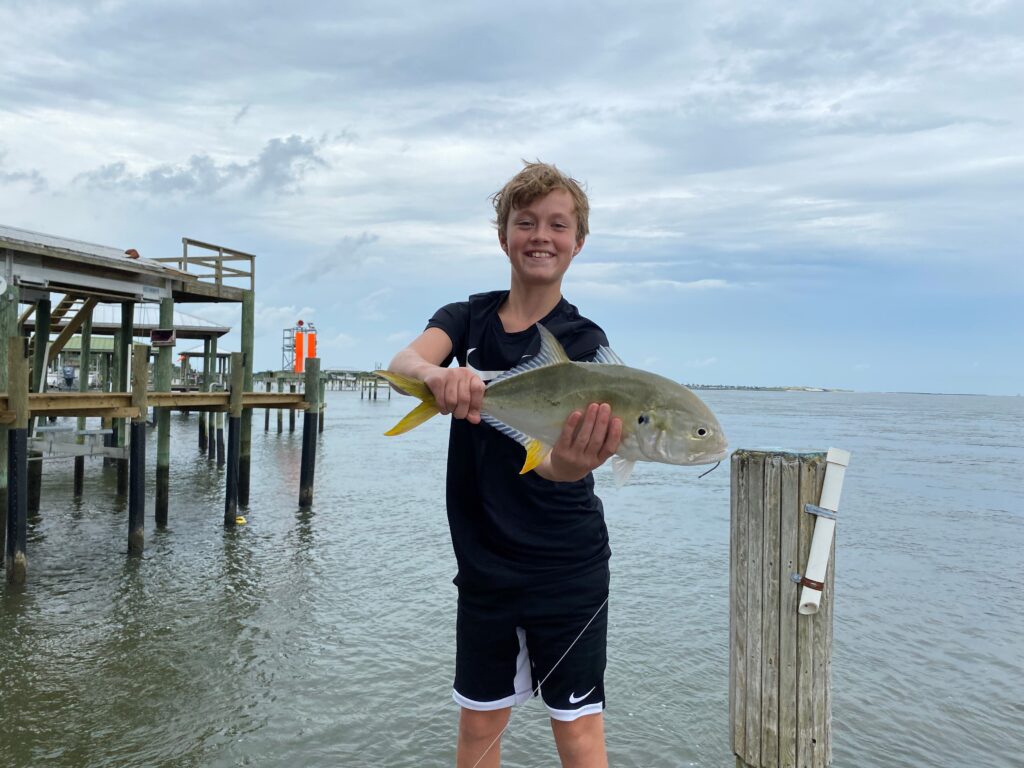
Science Is Key to Effective Management
Florida state agencies have been heavily engaged in addressing water quality concerns and aquatic preserves protection, both of which will benefit saltwater fish populations. The importance of good science came up often in these and other summit presentations.
The Florida Department of Environmental Protection discussed the substantial investments it is making in Everglades and water quality improvements. Alex Reed, FDEP director for the Office of Resilience and Coastal Protection, detailed how the Aquatic Preserve Program is protecting 2.6 million acres of submerged resources, such as seagrass beds, for future generations. And her colleagues discussed how efforts that have been focused largely on wastewater and sewage treatment to protect Florida water supplies will now begin to focus more on stormwater and agricultural runoff that directly impacts marine ecosystems. Substantial investments are now going into Everglades and other water quality improvements.
“We’re trying to make sure science has a seat at the table as we move forward,” said Shawn Hamilton, FDEP secretary.
The need to base management decisions on sound science was likewise reflected by Florida Fish and Wildlife Conservation Commission presenters, who related it to their work dedicated to improving inshore fish habitat.
“Successful fisheries management requires a good understanding of the status and health of our fisheries, which means collecting as much data as possible from as many reliable sources as possible,” said Jessica McCawley, FWC director of the Division of Marine Fisheries Management.
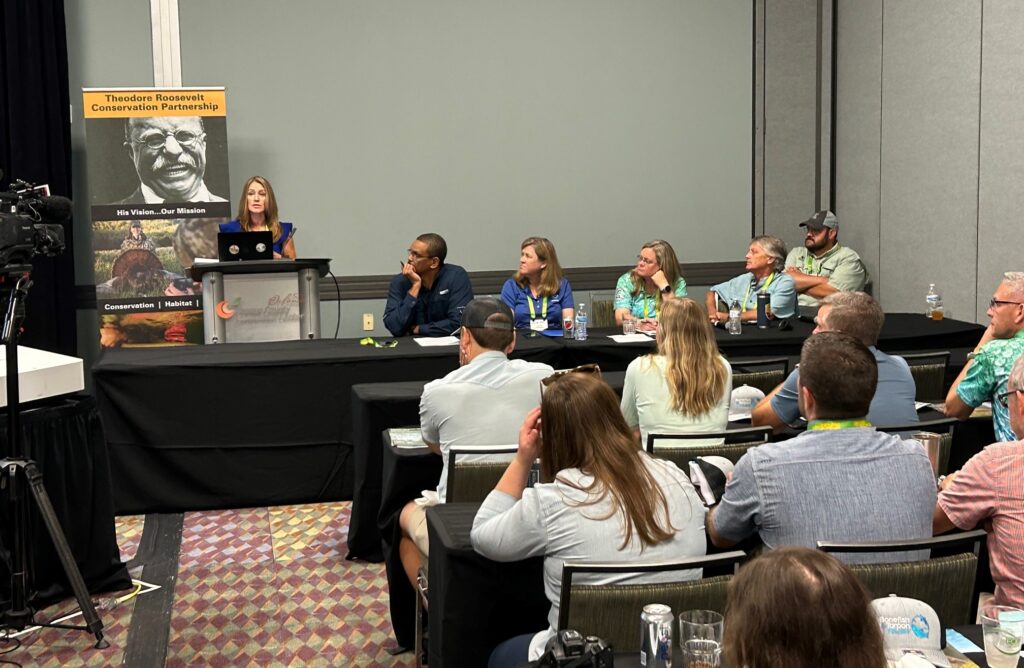
Federal, State, and Private Funding Remain Vital
“The last thing we want is to have historical levels of funding available and not be able to get that out on the ground,” said TRCP Center for Marine Fisheries Director Chris Macaluso, who moderated the Conservation Summit panels.
Summit presenters highlighted how, right now, there remains an opportunity to obtain federal funding for conservation projects through the Bipartisan Infrastructure Law and Inflation Reduction Act.
Selberg-Robinson said that a major priority of her agency is focusing on projects that address fish habitat. NOAA already has awarded all round-one applicants for federal funding, with 109 projects to be funded. Competitive grants are still available to address conservation projects, including those that address fish habitat.
TRCP consistently also works to direct private funding to leverage efforts to address priority conservation efforts.
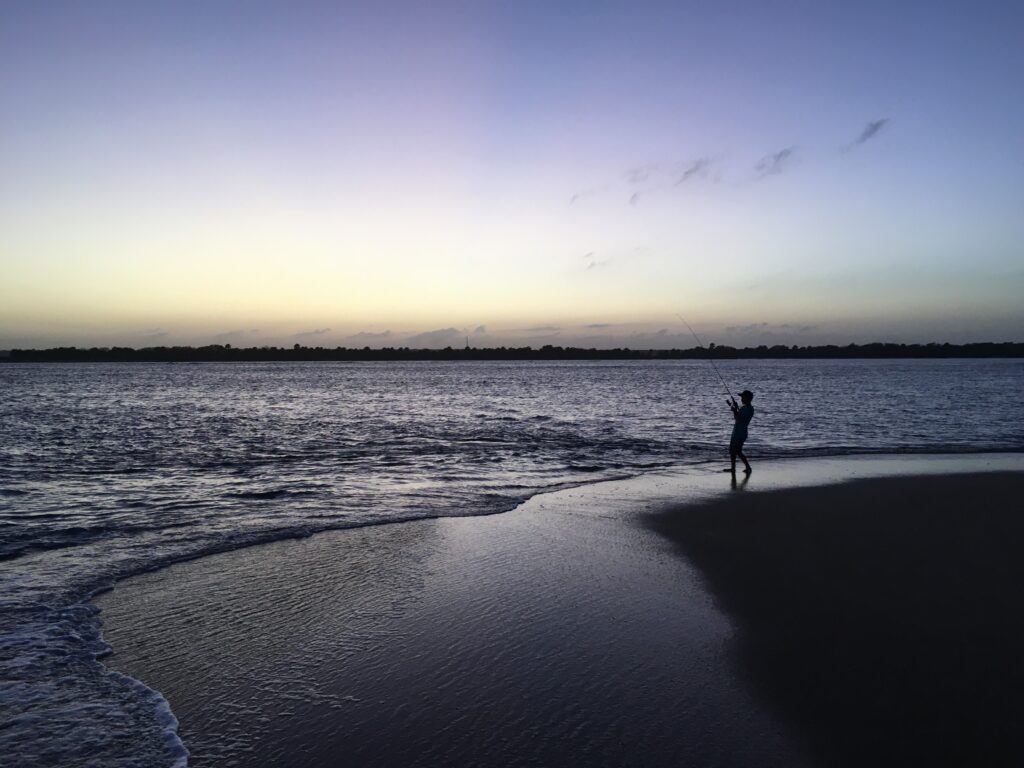
We’ve Made Progress, But Perseverance Is Crucial
Restoration efforts in the Florida Everglades, which are being addressed by a broad coalition of federal, state, nonprofit, and private groups, including TRCP, provide an optimal example of another theme that emerged in the Conservation Summit: For many conservation goals, work is well underway, but far from the finish line. Construction of the Everglades Agricultural Reservoir began this year in a major milestone for long-term Everglades restoration efforts. The intent is to remedy decades of development and infrastructure wreaking havoc within an ecosystem that not only supports myriad fish and wildlife species within its wetland habitats, but also is necessary to filter contaminants from fresh water flowing south into Florida Bay. The reservoir will allow for capture and treatment of nutrient-laden runoff from Lake Okeechobee, which fuels toxic algal blooms, before water flows into the sportfishing haven of the Bay.
The reservoir won’t be completed for years and will require continued funding support. The TRCP has endeavored to engage with the conservation and sportfishing communities to collectively push for continued funding and focus to complete long-term efforts to restore the Everglades.
“The good news is we are making great progress, and we can’t stop in that progress,” said Dr. Steve Davis, chief science officer for The Everglades Foundation.
Perseverance also has been necessary to help retain as many decommissioned Gulf of Mexico oil and gas platforms as possible, as hundreds are slated for removal despite that these structures have created extensive reef systems populated with all manner of marine life. The artificial reefs both attract fish and produce more biomass, with over 90 species of fish found at Gulf reef sites, according to data from Texas A&M Corpus Christi. Research also shows that fish on the rig reefs grow as fast or faster than those on natural Gulf reefs. For these reasons, it’s important to not only work to save the retired oil and gas platforms now in the Gulf, but also consider the potential of offshore wind turbines to provide similar habitat for sportfish like amberjack, snapper, sheepshead, and cobia.
“We have a good opportunity with wind energy coming up,” said Dr. Matt Streich, associate research scientist, Harte Research Institute for Gulf of Mexico Studies, Texas A&M Corpus Christi. “But we need to keep these structures in the water while there’s still time.”
Thank You, Sponsors and Presenters!
We want to offer a big thank you to all the presenters and participants of the 2023 summit. Also, it wouldn’t have been possible without support from this year’s sponsors:
- Bonefish & Tarpon Trust
- NOAA Fisheries
- Yamaha
- Bass Pro Shops
- Costa
- Florida Fish & Wildlife Conservation Commission
- Recreational Boating & Fishing Foundation
- American Sportfishing Association

